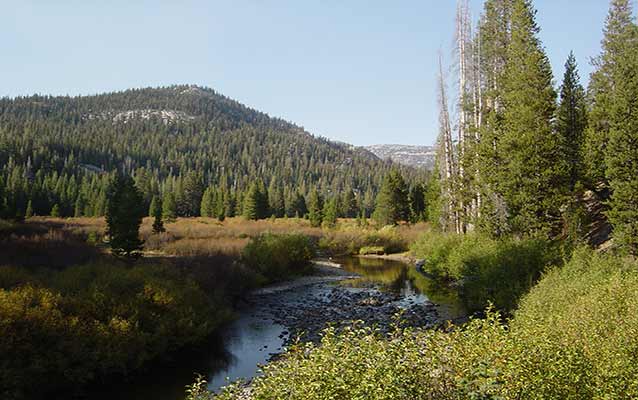Last updated: June 18, 2015
Lesson Plan
Climate Science in Focus: Earth as a System

- Grade Level:
- High School: Ninth Grade through Twelfth Grade
- Subject:
- Science
- Lesson Duration:
- 60 Minutes
- Common Core Standards:
- 9-10.RST.5, 9-10.RST.7
- Thinking Skills:
- Remembering: Recalling or recognizing information ideas, and principles. Understanding: Understand the main idea of material heard, viewed, or read. Interpret or summarize the ideas in own words. Applying: Apply an abstract idea in a concrete situation to solve a problem or relate it to a prior experience. Analyzing: Break down a concept or idea into parts and show the relationships among the parts. Evaluating: Make informed judgements about the value of ideas or materials. Use standards and criteria to support opinions and views.
Objective
Students will learn about the four Earth systems and how they are connected. Students will be able to:
1. Explain the Earth as a system of interconnected parts
2. Properly define and use Earth science vocabulary
Background
The Earth consists of four systems: the atmosphere, hydrosphere, geosphere, and biosphere, which are interconnected. Changes to one part of the system can have consequences on the others. Changes to global or regional climate can be caused by changes in the sun's energy output or Earth's orbit, tectonic events, ocean circulation, volcanic activity, glaciers, vegetation, and human activity.
Water is essential for life on Earth. Relative water availability is a major factor in designating habitats for different living organisms. In the United States, things like agriculture and water rights are hot topics. Current models predict that average global temperatures are going to continue to rise even if regional climate changes remain complex and varied. These changes will have an impact on all of Earth's systems.
Studies have shown that climate change is driven not only by natural effects but also by human activities. Knowledge of the factors that affect climate, coupled with responsible management of natural resources, are required for sustaining these Earth systems. Long-term change can be anticipated using science-based predictive models, making science and engineering essential to understanding global climate change and its possible impacts.
National Parks can serve as benchmarks for climate science trends and effects over time because they are protected areas void of human influence. Understanding current climate trends will help set students up to be successful in interpreting and engaging in discussions about climate change, which will lead to informed decision making.
Preparation
Write the following question on the board or projector so the all students can see it: What is a system?
Prepare the following video:
Gather the following supplies:
-
Butcher paper and markers (one set per group)
- Post-it notes (3 per student)
Materials
This file provides pre- and post-video questions for students.
Lesson Hook/Preview
Briefly discuss the following question: What is a system? Define and provide an example of a system. Diagram your system.
Procedure
-
Distribute worksheet 1.1 (In Materials) and have students complete pre-video questions on worksheet 1.1.
-
Show the video "Earth as a System." Students should complete post-video questions on worksheet 1.1.
-
Monitor discussion and distribute butcher paper and markers for posters. Separate students into small groups, have students discuss what "Earth as a system" means.
-
Students should create an illustration that demonstrates, "Earth as a System." Be sure to include the 4 spheres and give at least one example of how humans are impacting/influencing each one.
- Distribute post-it notes and instruct students on "gallery walk." Students should walk and view posters created by all groups and make 2 positive comments and 1 suggestion on each.
Vocabulary
|
Assessment Materials
Discussion: How do you view the Earth differently after today's activities?
You can also use the attached assessment document.
Earth as a System Assessment
Related Lessons or Education Materials
Day 1- Earth as a System
Day 2- Weather vs Climate
Day 3- Watershed
Day 4- Climate Science Data and Tools
Day 5- Field Trip
Day 6- NPS Connections
Day 7- Project Preparation
Day 8- Evaluations
